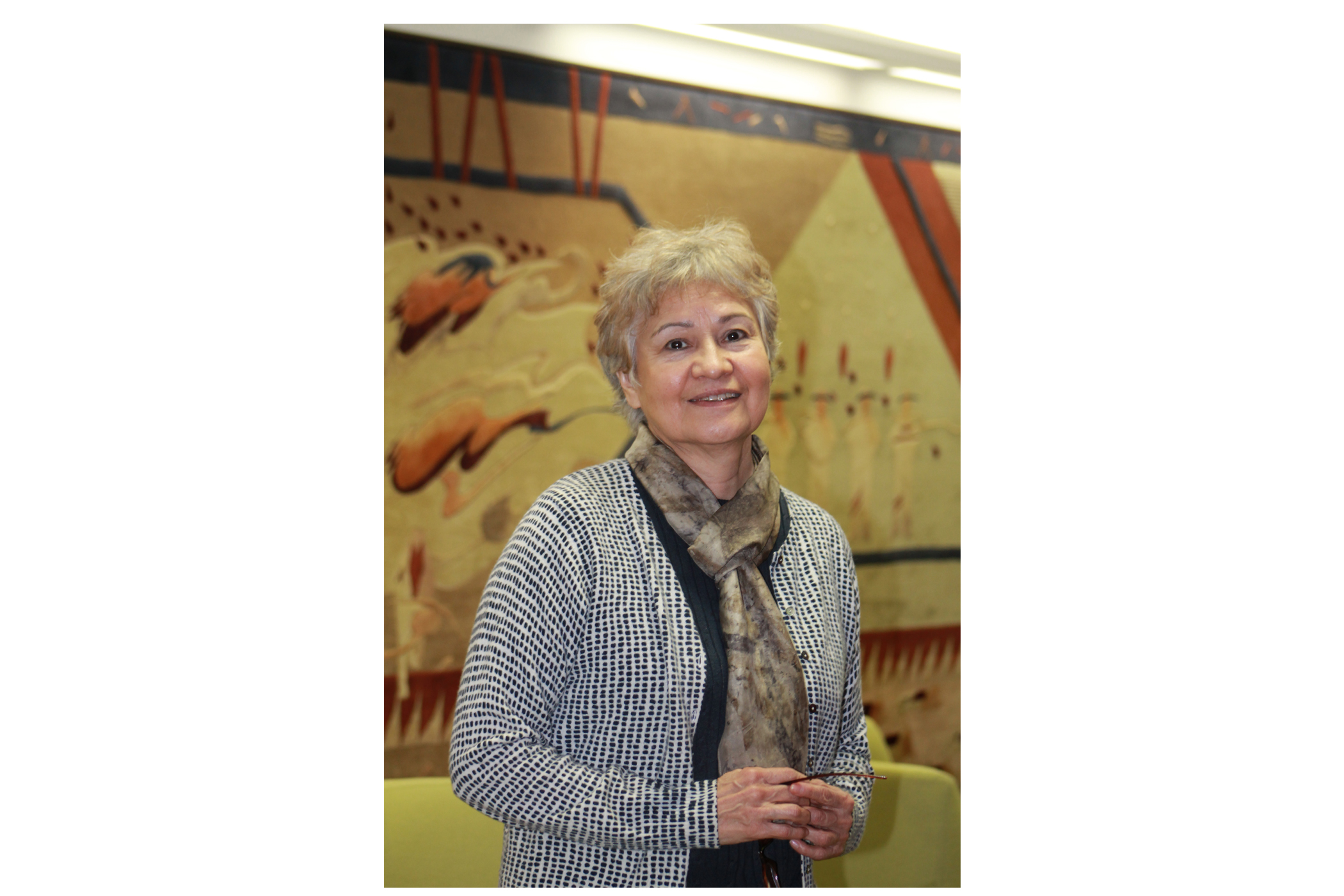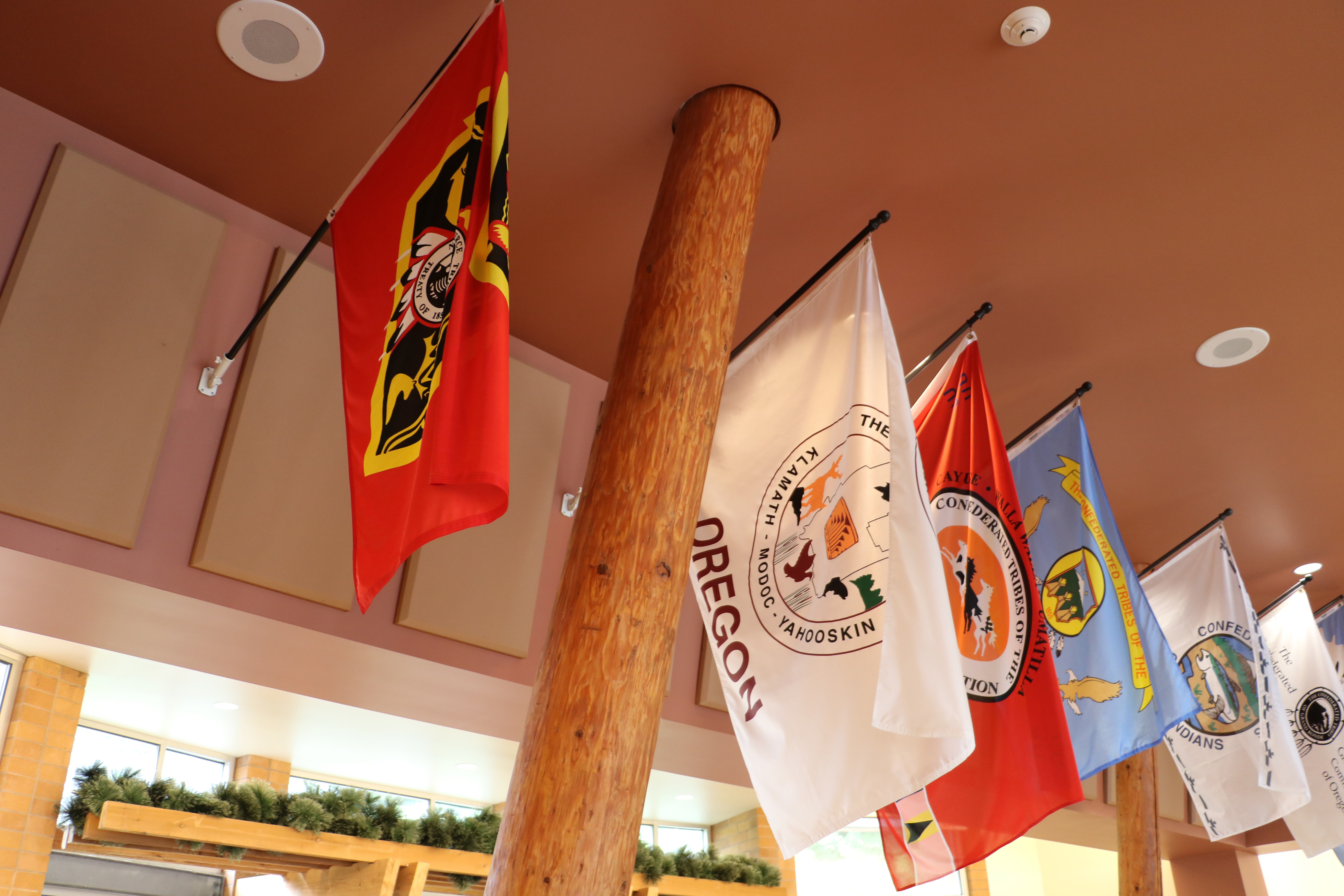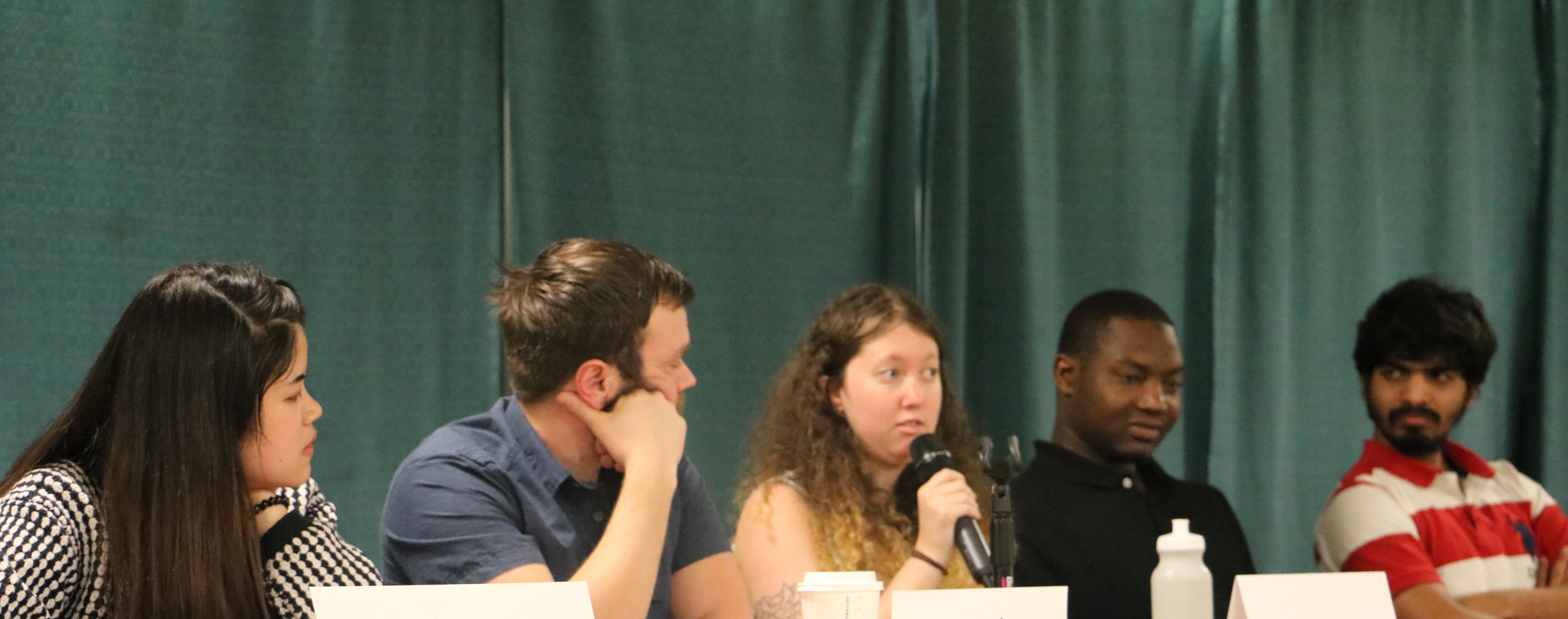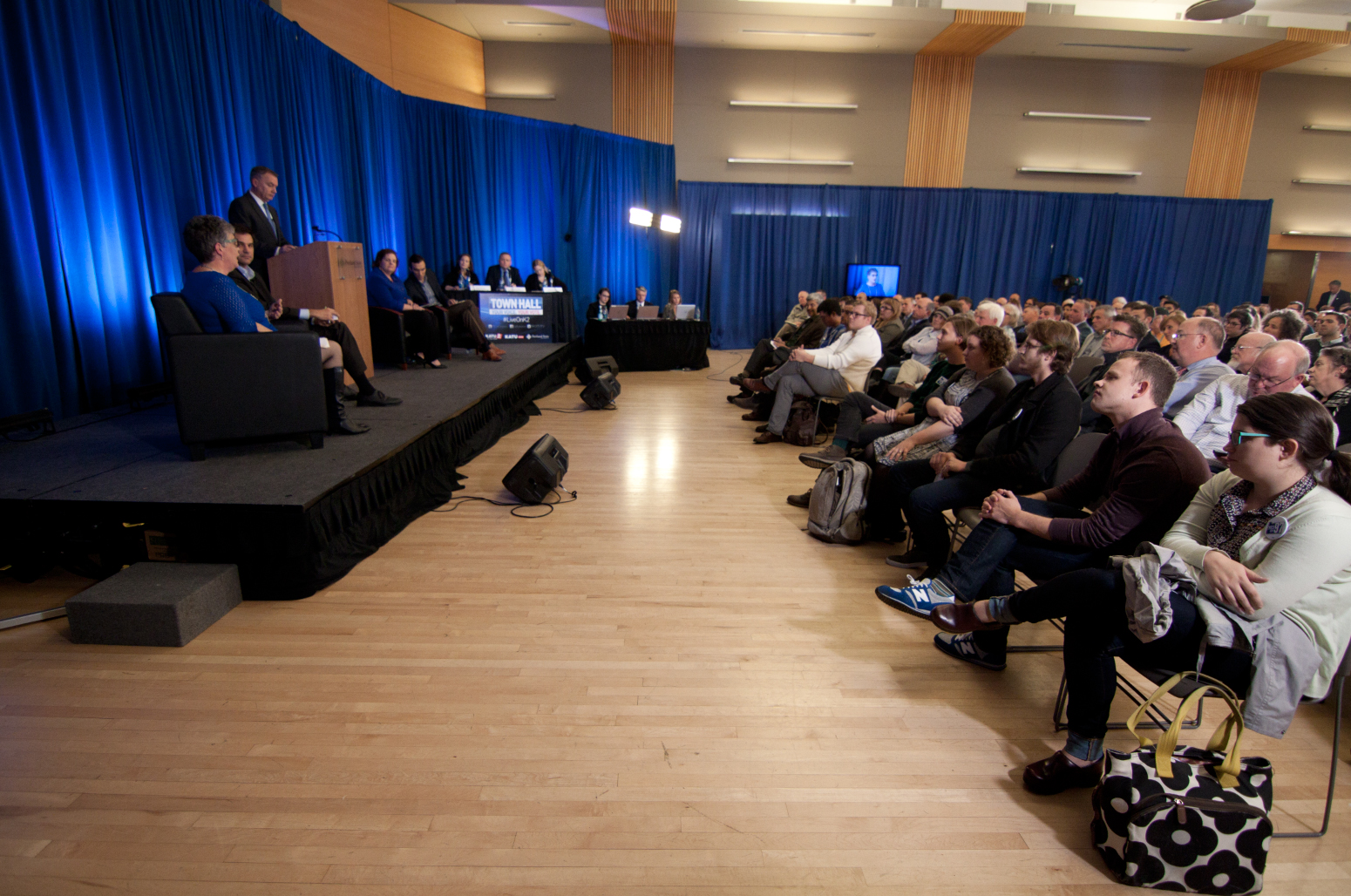At the start of this year’s legislative session, Oregon Governor Kate Brown’s office put forth a long-awaited bill with a stated purpose to mandate and “develop curriculum relating to Native American experience in Oregon and to provide professional development related to curriculum” in schools. The measure now sits in Ways and Means awaiting action.
Oregon is home to nine federally recognized tribes, but you wouldn’t know that if you were looking through much of the state’s standard curriculum for K–12 students. As a matter of fact, the majority of this curriculum is covered in 4th grade, according to the standards set forth in Oregon’s Adopted Social Sciences Academic Content Standards. A general Indigenous history appears thereafter, and tribal relations appears in some form as well.
How can a state with such a robust Indigenous history be so lacking in a meaningful Native American curriculum? The answer depends largely on a history of neglect, but some of it can be attributable to the rise of the Common Core movement.
| POP QUIZ
Name the nine federally recognized tribes of Oregon: |
Common Core, common neglect
At Portland State’s American Indian Teacher Program, there’s hope for this new curriculum but also an understanding of the basic problems that hold back any current efforts at enacting a Native American curriculum.
“It’s a difficult time in the classroom because teachers have requirements from the district, and from the state, and from the federal government to teach to the Common Core State Standards and do the [standardized] testing,” explained Dr. Maria Tenorio, Ed.D. (San Felipe Pueblo), project director of the AITP.

“That distracts from a lot of curriculum that they may want to include in the classroom.”
Requiring the addition of Native American curriculum is a hard row to hoe, especially when it’s considered to be unrelated to standardized testing.
Tenorio compared the situation to preparing for a dinner party.
“You have four burners on your stove, and so you’ve got math, writing, and reading there, so what’s your fourth burner gonna be?” Tenorio asked. “Is it gonna be science? Is it gonna be cultural history? Is it gonna be language? Is it gonna be PE? You’re really called upon to be creative.”
In the past, before the creation of Common Core, the lack of a coherent or accurate Native American curriculum often meant creativity was a loaded term. What creativity meant in the past was sometimes subject to the kind of folksy flattening of Native American lives that resulted in hand turkeys and paper headdresses.
Christopher Rempel (Kalapuya/Chinook/Klamath), a math major and Indigenous Nations studies minor graduating in June, said he experienced mostly stereotypes in school when it came to Native Americans.
“I encountered overgeneralizations. Indians were just kind of a stereotype, just like a stand-in caricature,” Rempel said. There were the kind of ones who attacked the settlers, and then at some points they were nice…they had bows and arrows, and they just camped, and talked to the animals.”
Rempel said he felt invisible in the curriculum. “I couldn’t see myself, just because curriculum paints Native Americans as a vanished race. People were here and then they just disappeared.”
Rachel Black Elk (Oglala Lakota/Lumbee Back Swamp Clan), a social science major and Indigenous Nations studies minor also graduating in June agreed.
Black Elk said she was “taught settler sympathizing lessons, where it was we had to make a covered wagon, we got assigned a settler family to track through the Oregon Trail story, and then yeah.“
“I remember crying at different points because then in the game they’d be like, oh, these group of Native Americans—Indians—they didn’t even call them Native Americans, they just said, oh yeah, this group of Indians attacked the settlers,” Black Elk recounted. “So as a class, when we got to the plains region where my people are from, I had really conflicting feelings because then my classmates were angry, and I felt guilty, but I was raised in a cultural home, so I was also really proud of my family. That was the kind of education I grew up with.”
The need for Senate Bill 13 is clear, Rempel and Black Elk agreed.
“Hearing about the Indians who attacked the settlers and disappeared, you don’t want to talk about it, you don’t want to explore it,” Rempel said. “You just want to forget about it and move on, and that’s kind of the goal of the assimilation of the system. So, if instead they could flip that narrative and talk about the ongoing efforts and revitalization and celebration of the culture, [we would] be much more proud and able to engage in much more meaningful dialogues with non-natives about our hopes and dreams and theirs and reconciliation and living in the modern day.”
Black Elk wants to change the narrative, one she said is based on “just getting down more to the nitty gritty: There’s our country, our home. We’re still here, and to not have a narrative that says that our people are a conquered people, [and] that we’re really a people that survived and have been creative and have made a lot of beautiful sacrifices, always with the intent that the next generation would thrive.”
“Senate Bill 13 symbolizes a step in how we systemically address these narratives and build consciousness throughout the generations, because right now, with our story, there’s an invisibility factor, and it’s dangerous,” Black Elk explained. “The systems this country is founded on were first implemented on Native people. Now, whether it’s class, or other marginalized racial groups are saying ‘oh, where did this come from’ or ‘what is this’ and it’s colonialism.”
| POP QUIZ
Name two rivers named after Oregon tribes:
|
A legislative response
At the start of the 2017 legislative session, one of the first bills filed was Senate Bill 13, which intended to accomplish the kind of parity sought by Native American leaders in the state of Oregon.
Filed at the request of Governor Kate Brown’s office, the bill—an emergency measure—would not only create a curriculum in consultation with Oregon’s tribes, but it would be doing so with the kind of immediacy that seems fitting for the problem at hand, ensuring that implementation would begin by the 2019–20 school year.
The bill ensures that the curriculum will be mandatory and that necessary training is required.
Bryan Hockaday from Governor Brown’s office noted that such a bill is necessary in light of dire circumstances facing Native American students in Oregon.
“Oregon is failing to meet the needs of its American Indian students as reflected by high drop out and absenteeism rates, over-representation in special education, and graduation rates at 53 percent,” Hockaday said.
“The state is missing a critical opportunity to fully leverage the strengths, assets, and contributions these students bring to their communities and larger state,” Hockaday added. “The lack of accurate and complete curricula contributes to the persistent achievement and opportunity gaps between American Indian and other students.”
Senate Bill 13, however, sits in the Joint Committee on Ways and Means, where its future is in question. When asked for comment, Ways and Means Co-Chair Senator Devlin’s office mentioned that money would be a major consideration for any bill, and that a tight budget this year meant Senate Bill 13’s fate was up in the air.
Playing it safe and pinching pennies doesn’t seem to pay dividends if the state of Washington’s experience is to be believed, however.
| POP QUIZ
The Tilikum Crossing derives its name from what language? |
Lessons from Washington state
“In May 2003, there was a tribal leaders conference, discussing education, at the Quinault Indian Reservation in their conference center,” recounted Washington state Senator John McCoy (D–Tulalip). “I was there for the day, and so during the conference I asked what did they want from me? And they just said we want our tribal history and culture taught in the common schools of Washington.”
McCoy, a citizen of the Tulalip Tribes of Washington, filed a bill that session, but it went nowhere due to it being a special session. After subsequent discussion in the following months the bill came to a point where it was ready for debate.
“[In] 2005 we actually made [the curriculum] mandatory, but I was informed if I wanted it passed, I had to make it encouraged, so [I made it] voluntary,” recounted McCoy. “So we decided that we had to get our foot in the door. So that’s what we did.”
Unfortunately, this proved to be an inadequate stopgap, McCoy stated. “We watched the school districts, we tried working with the districts, and then in 2012, tribes said it was time to make it mandatory because we are not gaining the headway we thought we should be.”
In 2015, Washington State Senate Bill 5433 was filed by McCoy, passed by the legislature, and signed by Governor Jay Inslee.
That bill closed all of what constituted significant differences between Washington State’s approach and Oregon’s Senate Bill 13 by basically removing the words “encouraged to” and replacing them with the mandate that Washington state school districts “shall” begin the process of adopting what Washington state now calls the Since Time Immemorial curriculum and consulting with the state’s 29 tribes.
McCoy has noticed a clear shift.
“There’s 296 school districts in the state of Washington. When we made [Native American curriculum] mandatory, there were 25 percent of them that were doing it,” McCoy recounted. “Like I say, we’re seeing more and more schools getting involved now. We have a training team, [The Washington State Office of Superintendent of Public Instruction] has a training team that runs around the state giving trainings on how to [teach Since Time Immemorial].”
| POP QUIZ
What is the pre-contact name of Mt. Hood? |
How to pass a bill
With Ways and Means not sure of the future of the bill due to the state’s fiscal concerns ahead of its meetings later this month, the potential for a stinging loss for the bill this session hangs over the heads of supporters. This isn’t altogether unexpected by those with experience in these matters.
“Money. Money and, to be blunt and honest, there was some racism involved, but it was primarily money,” McCoy said when asked on sources of resistance. “But I was glad to see in the Oregon bill [they’re] providing some money.”
Fiscal matters may loom large, but the fundamental mission remains the same, and the fundamental tactics necessary to pass a bill like Senate Bill 13 are universal. McCoy mentioned that the most powerful method of ensuring passage of a bill like Senate Bill 13 is the voices of those showing up to advocate.
“We had lots of elders and teenagers come to testify, which really helped it,” McCoy offered. “Be positive, bring positive stories to the legislature, and let the teenagers tell the stories.”
Senate Bill 13’s introduction into the Senate Committee on Education did exactly this, running two hours for testimony that included statements from teens, elders, educators and Governor Kate Brown.
Also present was Rep. Tawna Sanchez (D-43), MSW, a graduate of PSU and as a Shoshone-Bannock citizen, only the second Native American member to ever be seated in Oregon’s House of Representatives.
When asked about Senate Bill 13, Sanchez was hopeful.
“We have a great opportunity with Senate Bill 13 to develop curriculum to help shift our understanding of history and the fundamental bias we have instilled in our systems as a society,” Sanchez replied in remarks submitted to the Vanguard. “Has there ever been a time when tribes have been able to tell their story?”
“Growing up, those in the majority don’t often know that they intrinsically benefit from the framework of our systems as they haven’t been taught that reality,” Sanchez explained. “This is very important because as people, and particularly as children, we come to understand the world by learning-as-we-learn every day. If we offer the opportunity to actually understand the full scope of what is going on around us, we could change and shift the dynamic of oppression in this country. Many students tell me they were frustrated to only learn of this in college. Think about how different things would be if we learned about this in elementary school.”
The importance of having a curriculum that’s inclusive of Native American students is vital, Sanchez believes.
“Often, native kids do not fare well in their education because they have nothing to relate to; what they are learning is colonized history,” Sanchez explained. “This bill, I believe, will be critical in ensuring that our students are able to feel connected to the material that they’re learning and for the material to make sense in order for the history to be more complete.”
| POP QUIZ
What was termination, and when was it reversed?
|
The future of Senate Bill 13
With dozens of bills piling up on the desk of the Ways and Means Committee, it remains to be seen what may become of Senate Bill 13.
With the backing of the governor’s office, however, there is hope that it should pass.
“Governor Brown deeply values the preservation of cultural integrity and believes that honoring the history of our tribal communities is critically important to our state as whole, and to future generations of students,” noted Bryan Hockaday with Governor Brown’s office.
“The Oregon Department of Education has worked closely with all nine federally recognized tribes and other tribal communities throughout the state on the development of the concept for Senate Bill 13 over the span of two years,” Hockaday’s statement continued. “Our vision is that every school district in Oregon implements historically accurate, culturally embedded, place-based, contemporary, and developmentally appropriate American Indian Alaska Native curriculum that is developed in collaboration with local tribes and aligned with the state standards.”
Ways and Means is expected to take up the bill by the end of the month.






